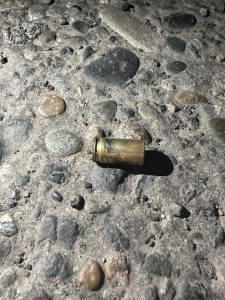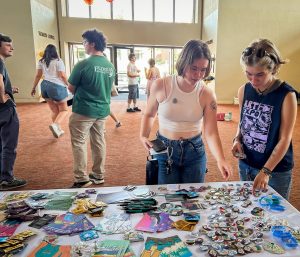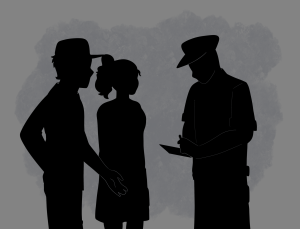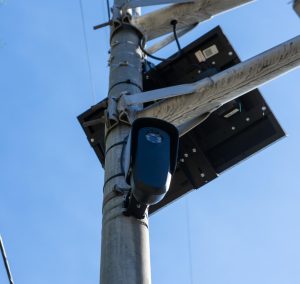The Evolution of the Whitman Outdoor Program
April 6, 2017
One of the most common walks across Whitman College takes students from Reid Campus Center to Ankeny. Along the way, one might see busses loaded with kayaks for a weekend trip, students ascending Whitman’s famous climbing wall or even skiers moving through campus in the winter. These common sights are glimpses into the popularity of outdoor sports and activities in the Whitman community. The Outdoor Program (OP) has played a significant role in cultivating this love for the outdoors and outdoor sports on the Whitman campus throughout the years.
The Past
Founded around 1969, the Outing Club, as it was formerly called, was the brainchild of a group of Whitman students that wished to provide a means for Whitman students to enjoy the fantastic nature around Whitman through outdoor activities.
A brochure of the Outing Club from the 1970s shows that the program’s mission is similar to that of the Outdoor Program today:
“We are NOT a club. Instead, we are a student-run, outdoor recreation cooperative sponsored by the Student Union Building (SUB). We organize a variety of outdoor-related activities which are open to anyone at anytime. There are no dues or membership qualifications. We invite those students interested in non-competitive and non-motorized wilderness pursuits to share adventures with us.”
The Outings Club was completely run by student volunteers. Any student could organize and plan a trip and invite others to come. These trips ranged from hiking and biking to foraging and inner tubing.
Since any student could organize and lead a trip, many trips did not have leaders with outdoor or safety training. For liability purposes, the trips were positioned under the Cooperative Wilderness Adventure Scheme, a policy in which the trips were considered individual student trips, not lead by the school and run by trip “organizers” rather than leaders.
Safety became a big issue when a death occurred when a Scrambles van rolled over in an accident. This brought up many concerns of the purpose and safety of the Outdoor Program.
“That, I think, brought greater scrutiny to what the program was doing. And things have evolved since the 60s when the program first started as a club in terms of liability and concerns in the country are way different now than they were in the 60s,” Brien Sheedy, current director of the OP, said.
Sheedy says that when he was hired in 2001, there was an emphasis placed on safety and bringing the program up to industry standards. One concern Sheedy tackled was the issue of the climbing wall–then located outside on the wall of Sherwood–which lacked the proper safety measures. At the time, climbing instructors were unpaid volunteers although the job required a high level of responsibility and training.
Sheedy implemented numerous changes to improve the climbing program, that included the wall instructors to be properly trained and paid. As for the climbing wall itself, Sheedy repaired the anchors on the wall when 75 percent of them were damaged. He also bought new holds, so that new and easier climbing routes could be built, and began enforcing the policies and procedures of the climbing wall.
In 2008, Sheedy joined the committee for the renovation of Sherwood Athletic Center to push for the already popular proposal of building a new indoor climbing center. According to Brien, this suggestion was not a guarantee.
“It wasn’t a given that the wall was going to happen. There were a number of stumbling blocks along the way. It was rejected two times by the board of trustees and had various things addressed before it was approved. But it was very popular,” Sheedy said.
After three proposals the climbing gym was approved. Sheedy worked tirelessly to make a state of the art climbing center for the Whitman community.
In addition to the creation of a new indoor climbing center, Sheedy brought other valuable changes to the OP.
He doubled the number of Scrambles from 10 to 20, doubled the number of Sports Studies, Recreation and Athletics (SSRA) courses, created four outdoor leadership courses and improved the efficiency and organization of the trips and the program as a whole.
The Impact of The Present
From participating in Scrambles, day trips and SSRAs, to working in the OP as a trip leader or climbing instructor, the Outdoor Program has impacted a large portion of the Whitman community.
Senior Mariah Bruns went on a Scramble in the North Cascades her first year then began to work for the OP the spring of her sophomore year. To her this program was very important in providing her with an environment where she could continue her passion for outdoor activities.
“I think part of it is subconsciously it has always fit with what my passions have been,” Bruns said.
Bruns chose to work at the OP during her sophomore year when she was dissatisfied with her academics and finding a place in the community.
“I think I decided that’s something I wanted to do because I was not super happy academically at that point and I was trying to kind of become reconnected with the things I knew I enjoyed,” Bruns said.
Her first glimpse into the culture of working in the OP came from an Outdoor Leadership course she took the spring of her sophomore year.
“I think I knew going in that I wanted to work for the OP, but that kind of introduced me to what I was getting into and what role I wanted to play in this community,” Bruns said.
This year Bruns, in addition to her usual repertoire of leading around four OP trips each semester, became a rock climbing instructor. Bruns completed the Single Pitch Instructor course in her advanced climbing class in order to be a climbing instructor, but unlike most other climbing instructors she did not complete the Climbing Wall Instructor course, that emphasizes instruction techniques that are applicable to the climbing gym. Instead, through her peers Bruns has learned many valuable instruction techniques that have helped her become a qualified climbing instructor.
“That’s definitely been a process to learn from my peers and co-instructors about teaching, but I think that’s been one of my most valuable things that I’ve taken from the climbing center. It’s because I came in without [taking the CWI course] that I was able to learn from my friends,” Bruns said.
For Bruns, the bonds that are created through the OP are what make the program and its trips so valuable.
“I think what really puts it over the edge as being a phenomenal trip is the community of people that’s on it,” Bruns said.
Sheedy also believes that one of the biggest assets Whitman gains from the OP are the bonds that it creates all across campus.
“Students do well at Whitman and they graduate and are successful when they feel that they have a supportive community,” Sheedy said. “And I think that one of the biggest things the Outdoor Program does is bring students from all different backgrounds around campus and mixes them together. Where they’re doing a fairly intense activity that causes them to bond and grow in ways that are harder elsewhere and that creates stronger community which helps people feel more comfortable and happier.”
A More Inclusive Future
As a haven for outdoor lovers and adventurers, the OP’s tight knit community has a very prominent presence on the Whitman campus. Although this community is positive for many, some perceive the OP’s culture as unwelcoming.
“The community that has developed in the OP is really close knit and that is phenomenal in a lot of ways. It also makes it this really tight group of people within the Whitman community that has, by a lot of students, felt really exclusive and really very challenging to be a part of a little bit” Bruns explained.
In order to dismantle the perception of the OP as exclusive and unwelcoming, Sheedy, the Assistant director Stuart Chapin and the other staff of the OP are taking steps to create a more inclusive environment.
“Moving forward it is very much a priority for me that the Outdoor Program is welcoming and inviting to any student … there will always be for a variety of reasons students who don’t feel welcomed and trying to figure out why that is and trying to figure out how to make a student feel welcomed is kind of an ongoing challenge and a priority,” Chapin said.
Chapin recognizes that not all people need to be outdoorsy just because they go to Whitman, but he strongly believes that there is value in outdoor experiences for all, no matter their comfortability in the outdoors.
“I think that even the most un-outdoorsy people have a lot of benefit to gain from giving it a try and having an experience and getting to have a moment of peace outside in nature,” Chapin said.
One concrete action that has been taken to increase the inclusivity and accessibility of the OP is the creation of financial scholarships and funds, including the Bob Carson Outdoor Fund (BCOF) and the Leadership Education Advancement Fund (LEAF).
BCOF provides every Whitman student 150 dollars to fund their participation in outdoor trips.
“Every student no matter their background can get 150 dollars to go on an OP trip and then they can continue to go on other trips after they use up the 150, but at least they get the opportunity,” Sheedy said.
Similarly, LEAF provides need-based scholarships for students to take outdoor leadership classes, that can be expensive.
“I think part of being more welcoming is removing barriers that prohibit someone from participating and creating a culture and atmosphere that is welcoming and inviting and a place where people of any background feel that they can come and be welcomed there,” Sheedy said.
It is hoped that the removal of financial barriers will help create a more diverse environment within the OP. According to Chapin the OP already has a high percentage of international student participants, but does not seem to be as inclusive for males (70 percent of participants are female), first generation working class students and minority students.
By removing financial barriers, training staff on cultural competency, encouraging a diverse group of leaders and working on customer service, Chapin believes that the OP could create a more welcoming environment for more people.
“If we can infiltrate all different areas of campus with people being leaders, we can have some success with that,” Chapin said.
Sheedy agreed: “The more diverse our staff and trip leaders become the easier it is for participants of all different backgrounds to see someone, a familiar and friendly face, someone that’s sort of similar to them in the program somewhere.”
While cultivating a more welcoming environment in the OP, the staff believes that the program already has many valuable assets that positively impact students. They simply would like to create an environment where all students can benefit from them.
“For me the program does a lot of great things already. So I want to keep making sure that the program is doing good work,” Chapin said. “And for me good work means being able to give students opportunities to spend time off campus outside enjoying nature and learning from nature, enjoying that, appreciating that.”
Bruns has experience first hand how the OP has positively affected her Whitman experience.
“It’s been huge. I think it’s been pretty critical in helping me find my place in the community here” Bruns said. “ … it was special in bringing me back when I wasn’t very happy with how my path in college was going. Sort of bringing me back to this area that I knew made me really happy and helping me kind of form that foundation that kind of changed my academics etc. and the rest of my college experience to this place of feeling like it’s right for me and feeling like I’ve had a fulfilling experience.”
By widening its doors and welcoming more people into the community, Sheedy believes the OP creates a positive community for all of Whitman.
“I think that the community building that happens on Outdoor Program trips doesn’t end there; it starts there.”






